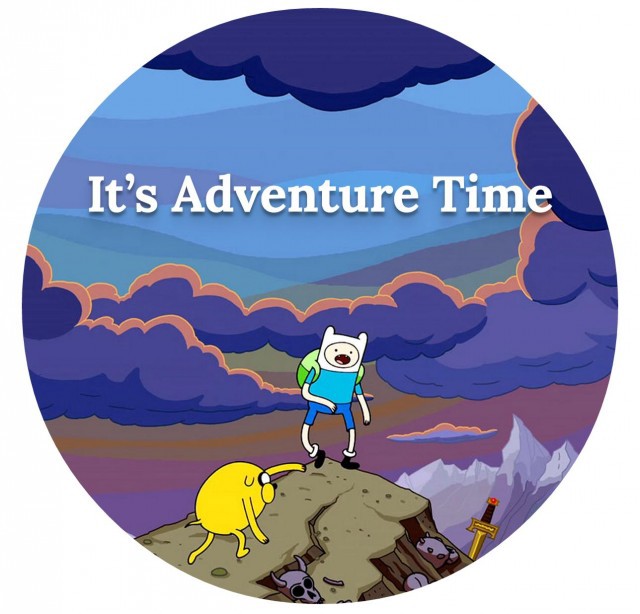How "Adventure Time" Came To Be

Adventure Time is a smash hit cartoon aimed primarily at kids age six to eleven. It’s also a deeply serious work of moral philosophy, a rip-roaring comic masterpiece, and a meditation on gender politics and love in the modern world. It is rich with moments of tenderness and confusion, and real terror and grief even; moments sometimes more resonant and elementally powerful than you experience in a good novel, though much of Adventure Time’s emotional force is visually evoked — conveyed through a language of seeing and feeling rather than words.
The heroes of Adventure Time — a boy in a white helmet named Finn, and his shape-shifting mutant dog/adopted brother, Jake — spend their days fighting evil, playing games, saving (and, sometimes, dating) princesses, learning secrets, and exploring their half-ruined home world of Ooo, as well as other worlds and dimensions. They possess a blind optimism that is as clueless as it is comforting: Whether they are fighting a swamp giant, trapped in a garbage-strewn cave or testing the super-spicy instant bath serum in the palace of Princess Bubblegum, they are (almost always) brave and kind; they want to have fun and they mean no harm. Finn and Jake are also full of a magical quality that real children have — of resilience, and of seeing the world as if for the first time.
These heroes are as fallible as can be — they’re quite capable of displaying selfishness, impatience and thick-headedness — but their essential good nature always wins out, if not their wisdom or their power to set things right. They mess up a lot, in fact, and their errors and imperfections aren’t magically erased at the end of each episode. At one point they accidentally create the conditions whereby a monster is able to extinguish all life in the universe with a wish; this idea scared me halfway out of my wits and into a curled-up ball under the covers. But it all blindly, clumsily gets set halfway-right again, leaving a host of potentially terrible consequences in the uncertain future: The show often produces a relieved, tender and half-frightened sensation, along with shock, pleasure and laughter.
Adventure Time’s dozens of characters are complex in a way that is rarely seen on television for adults, let alone children; each seems to inhabit his own world. In E.M. Forster’s memorable phrase, they are round characters, “capable of surprising in a convincing way.” Lumpy Space Princess is a lovable but ghastly teenager, tediously obsessed with her old boyfriend, the unprepossessing Brad; she treats her well-meaning parents very shabbily. Marceline the Vampire Queen’s father is present just enough to make it impossible for her to ignore or forget his cruelty and selfishness — qualities she has inherited, to some degree. Princess Bubblegum is afflicted with intellectual arrogance and an inability to anticipate the dangerous consequences of her scientific experiments.
The Ice King is a tragic figure — to my mind, the hero — of Adventure Time. He is a danger to himself and everyone else, subject to unpredictable rages and fits of violence, but he will break your heart. He is forever trying to marry a princess or make a friend, but it never, ever works out, he can only push the thing he desires out of reach by the very force of his longing. Despite being a furious half-crazy blue cartoon villain, he is entirely human; he is ridiculous, needy and sad; he is oneself.
“I identify with him more than any other character,” said Adventure Time’s creator Pendleton Ward, chatting offhandedly in the writers’ room at the studio in Burbank, where we had gathered with the show’s key writers and producers.
“But not in terms of, like, trying to capture women….” said Adam Muto, the show’s co-executive producer.
“Oh, yes!” Ward said stoutly. Then, after the laughter subsided: “No, no, no, I mean… not capture, literally kidnapping women…. Just like, living alone and having to talk to your pet.”
Read the rest at this story’s permanent home: The Hole Near The Center Of The World.
